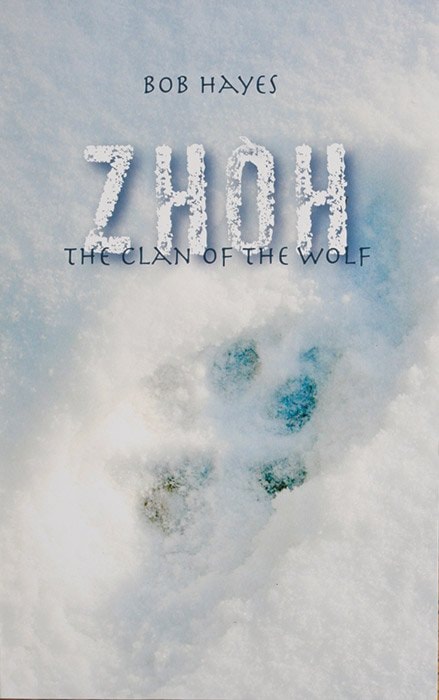A boy gets ready to throw his spear, thinking he is about to kill a wolverine. A grizzly bear instead pops out of his den, chasing after the boy.
The scene — totally imaginary — is set 14,000 years ago.
It’s from Bob Hayes’s new novel Zhoh: The Clan of the Wolf, which chronicles the lives of three people on the Porcupine River, near modern-day Old Crow.
The novel mixes Hayes’s personal experiences working as a wildlife biologist in Old Crow in the 1970s and ’80s with historical data about the people who lived there and ideas from Gwich’in culture.
“I spent a fair bit of time with a Yukon palaeontologist to get the landscape and the animals right,” Hayes said.
Hayes drew from his own experience to write the book’s opening scene. He was putting radio collars on wolverines to study their behaviour. As he was getting ready to shoot a tranquilizing dart from a helicopter at what he thought was a wolverine, a grizzly came out swinging from his den, trying to hit the aircraft.
Hayes was fine but it made for a good yarn and eventually became one of the many stories he wove together with historical facts to write his book.
“You want to tell a good story,” he said about writing the book. “You want people to imagine a world you think is realistically portrayed.”
It’s not his first book. In 2010 he published Wolves of the Yukon, a non-fiction book he wrote after studying the animals for over 20 years.
Zhoh follows three children whose hunting party was wiped out. They search for other humans and survive wild predators in the frozen tundra.
Because he incorporated elements of Gwich’in culture, Hayes got his book reviewed and approved by the Vuntut Gwitchin First Nation’s heritage committee.
“I wouldn’t write this book without the consent of the Vuntut Gwitchin people,” he said. “I wanted to find the closest culture I could find to that world 14,000 years ago.”
Over the years he got to know people in the community, developing a good relationship with them, he said. Yesterday he was in Old Crow for the book launch.
“How do they see someone take their world and imagine it 14,000 years ago?” he said. “That’s the interesting part.”
But besides its historical nature, it’s a story about living in extremely difficult conditions. Around 14,000 years ago, the grassland was quickly disappearing from North Yukon.
“Everything was getting wetter,” he said. “The grass was replaced by shrubs.”
The mammoths, bison and horses that survived on grass started to die, meaning there were fewer food sources for the humans there. At the time the winter temperature dipped regularly to -60C.
It’s in those extreme conditions that the characters have to find their way back to other clans in the region.
It’s a story of self-reliance, in some ways comparable to Hayes’s experience when he first started to work in Old Crow.
“We were on the Old Crow Flats with my wife and daughter for six weeks (at a time) with no support — just a canoe,” he said.
There was no bear spray back then, and Hayes doesn’t remember ever carrying a gun on the flats.
He had a few close calls, including a face to face encounter with a moose and her calves.
“The only thing I could do is stand in the mud with my paddle and swing at it,” Hayes said.
“It was a paddle length away for a minute, deciding whether it was going to kill me or not.”
The moose left and Hayes went on to survive other Indiana Jones-like adventures — including a helicopter crash and an airplane crash.
Hayes self-published the novel, but prefers to say it was independently published. A team of editors and designers worked with him to produce the book.
The Whitehorse book launch is scheduled for Nov. 24 from 5 to 7 p.m. at the Claim.
“It’s (going to be) a bit of a party,” Hayes said.
Contact Pierre Chauvin at pierre.chauvin@yukon-news.com.
